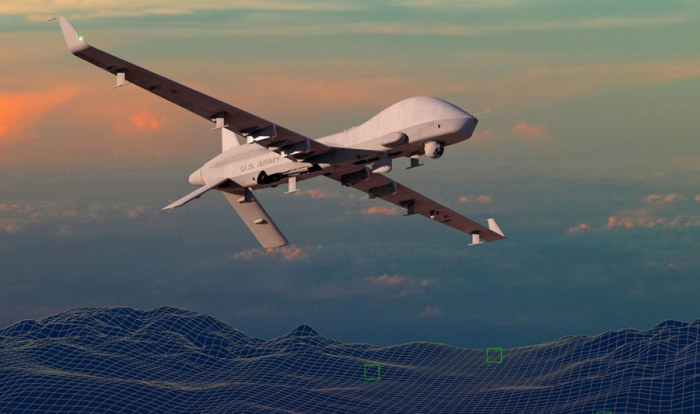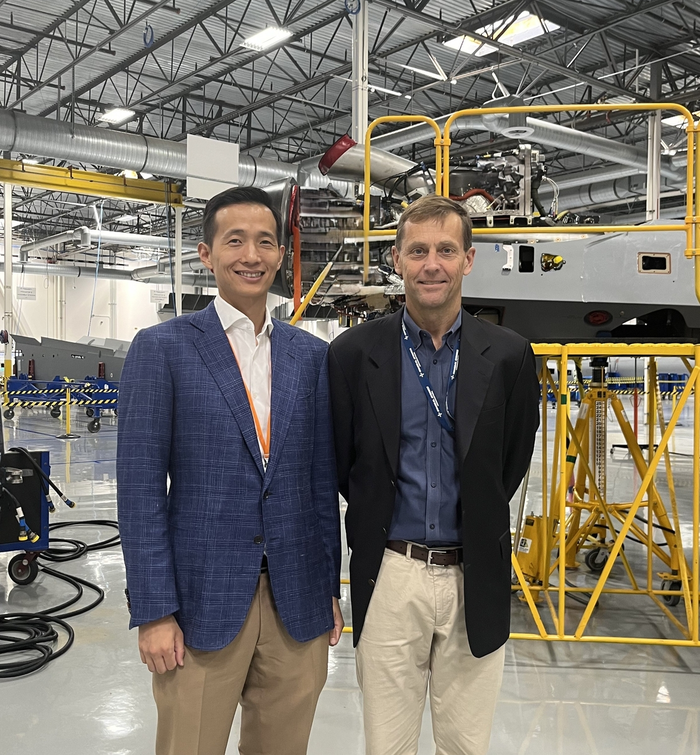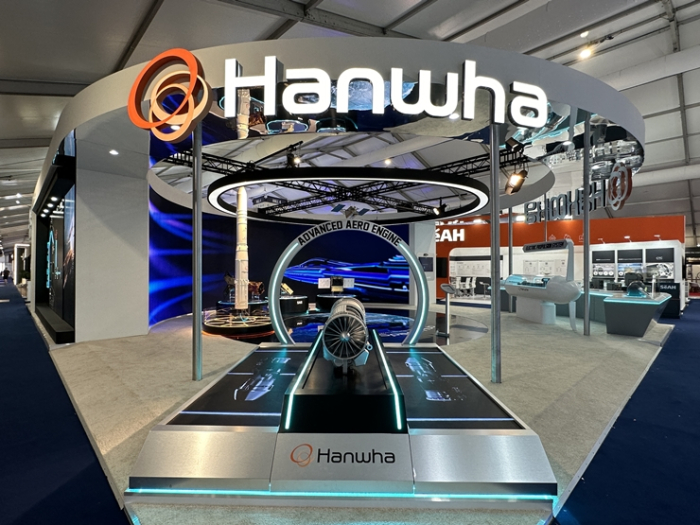Hanwha Aerospace, General Atomics to build unmanned aerial vehicles
GA-ASI, known for the MQ-1 Predator, and Hanwha plan to conduct their UAV’s maiden flight by 2027
By Apr 02, 2025 (Gmt+09:00)
LG Chem to sell water filter business to Glenwood PE for $692 million


KT&G eyes overseas M&A after rejecting activist fund's offer


Mirae Asset to be named Korea Post’s core real estate fund operator


StockX in merger talks with Naver’s online reseller Kream


Meritz backs half of ex-manager’s $210 mn hedge fund



Hanwha Aerospace Co., a leading South Korean defense company, has joined forces with US-based General Atomics Aeronautical Systems Inc. (GA-ASI) to develop and manufacture unmanned aerial vehicles (UAVs).
The defense affiliate of Korea’s chemicals-to-defense conglomerate Hanwha Group said on Wednesday that the two companies agreed to co-develop the Gray Eagle Short Takeoff and Landing (GE-STOL) UAV.
The new partnership aims to strengthen technological cooperation and expand capabilities in a rapidly growing sector widely regarded as a game-changer in modern warfare, according to the companies.
Hanwha said it will allocate 300 billion won ($205 million) from its recently announced 3.6 trillion won, or $2.5 billion, capital raising plan through a rights offering, to fund research and development as well as production facilities for the joint UAV program.
Hanwha estimates that the full-scale development of UAVs and engines, along with the necessary infrastructure, will require investment exceeding 750 billion won.

Industry watchers said the partnership marks a significant step in Hanwha's ambitions to establish itself as a key player in the global unmanned systems industry.
The company also intends to foster a domestic supply chain for UAV components.
“This initiative would create jobs and provide opportunities for local materials, components and equipment suppliers, reinforcing the country’s UAV industry ecosystem,” said a Hanwha Aerospace official.
GAME CHANGER IN MODERN WARFARE
UAVs, also known as unmanned aircraft systems (UAS), are increasingly critical in military operations, with applications ranging from surveillance and reconnaissance to strike missions.
Unlike conventional drones, military UAVs can carry substantial payloads, including weapons and advanced surveillance equipment, enhancing their operational utility.
GA-ASI, the developer of the MQ-1 Predator and other advanced UAV platforms, has supplied unmanned aircraft systems to NATO member states, including the UK, and to NATO partners such as Japan and Australia.

Hanwha aims to leverage its partnership with GA-ASI to gain end-to-end expertise in UAV development, from design and production to operations and sales.
The GE-STOL to be developed by Hanwha and GA-ASI will be designed to take off and land on short runways or naval vessels, as well as operate in austere environments with minimal infrastructure.
MAIDEN FLIGHT BY 2027
The UAV will have a payload capacity of 1.6 tons and is expected to conduct its maiden flight by 2027, according to Hanwha.
Industry experts anticipate robust demand for advanced UAVs.
GA-ASI’s market analysis showed that demand for GE-STOL will reach over 600 units over the next decade, translating into a market of some 15 trillion won, according to Hanwha.
Kim Dong-kwan, vice chairman of Hanwha Group, highlighted the significance of the collaboration for Korea’s defense ambitions.
“Hanwha Aerospace views unmanned systems as a strategic pillar for the future of defense. Through our collaboration with GA-ASI, we aim to strengthen sovereign defense capabilities, expand South Korea’s presence in the global UAS market and contribute to a more robust Korea-US alliance,” he said.
Write to Woo-Sub Kim at duter@hankyung.com
In-Soo Nam edited this article.
-
 Aerospace & DefenseHanwha Aerospace plans record $2.5 bn rights offering for plant expansion
Aerospace & DefenseHanwha Aerospace plans record $2.5 bn rights offering for plant expansionMar 20, 2025 (Gmt+09:00)
3 Min read -
 Aerospace & DefenseHanwha Aerospace nears $276 million K9 howitzer deal with Vietnam
Aerospace & DefenseHanwha Aerospace nears $276 million K9 howitzer deal with VietnamJan 20, 2025 (Gmt+09:00)
3 Min read -
 Aerospace & DefenseLeonardo's Coulter named Hanwha Aerospace’s 1st foreign global chief
Aerospace & DefenseLeonardo's Coulter named Hanwha Aerospace’s 1st foreign global chiefDec 16, 2024 (Gmt+09:00)
3 Min read -
 Aerospace & DefensePerigee, Quantum Aero to cooperate on military UAV
Aerospace & DefensePerigee, Quantum Aero to cooperate on military UAVNov 01, 2024 (Gmt+09:00)
1 Min read -
 Aerospace & DefenseHanwha Aerospace, Poland sign $1.6 billion Chunmoo rocket launcher deal
Aerospace & DefenseHanwha Aerospace, Poland sign $1.6 billion Chunmoo rocket launcher dealApr 25, 2024 (Gmt+09:00)
1 Min read -

-
 Aerospace & DefenseHanwha Aerospace to develop engine materials for military UAVs
Aerospace & DefenseHanwha Aerospace to develop engine materials for military UAVsSep 14, 2023 (Gmt+09:00)
1 Min read -
 Aerospace & DefenseKAI signs agreement with Northrop Grumman to develop UAVs
Aerospace & DefenseKAI signs agreement with Northrop Grumman to develop UAVsJan 19, 2023 (Gmt+09:00)
1 Min read


